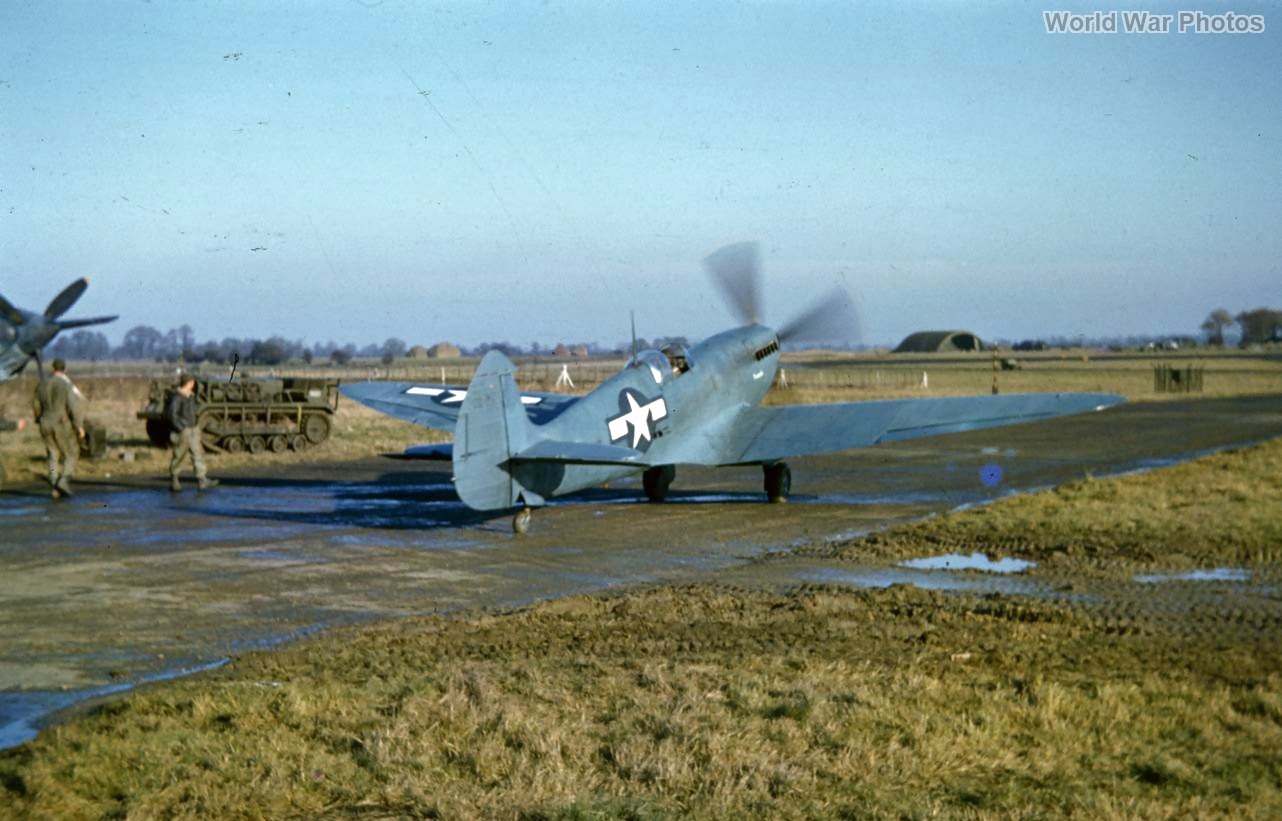The 7th Photographic Group (Reconnaissance) played a crucial role in aerial reconnaissance for the U.S. Army Air Forces during World War II. This group operated a variety of aircraft, primarily modified for photographic reconnaissance missions, and had distinct paint schemes and markings that evolved over the course of the war.
Aircraft and Markings:
F-5 Lightning Variants (July 1943 – October 1945):
- F-5A:
- Early aircraft in the 13th Photographic Squadron were finished in an overall light blue with a darker azure blue on the upper surfaces, dappled in various areas. This was likely an interim scheme before the adoption of Synthetic Haze paint, which became the standard for photo reconnaissance aircraft.
- Later F-5As were delivered with Synthetic Haze, but many were resprayed in PRU (Photo Reconnaissance Unit) Blue, a darker shade compared to Synthetic Haze with a slight greenish tint.
- F-5E:
- Arriving in mid-1944 in natural metal finish, these aircraft were initially resprayed with PRU Blue until about November 1944, when the practice was discontinued, and they were left in natural metal (“silver”).
- Tail numbers were rarely seen on F-5As, but when present, they were in yellow or black on blue finishes. The last three digits of the serial number were often carried on the outward-facing sides of the engines in white, 12 inches high. For natural metal-finish aircraft, these numbers were black.
- Invasion Stripes: The 7th Photo Group’s F-5s carried the black and white stripes mandated by the AEAF for operations during the cross-Channel invasion (D-Day).
- Unit Markings: No unit markings were used until spring 1944, when colored spinners were introduced:
- 13th Photo Squadron: Red spinner
- 22nd Photo Squadron: White or bare metal spinner
- 27th Photo Squadron: Dark blue spinner
- By early 1945, a group marking was introduced—a 10-inch-wide red stripe from the spinner to the leading edge of the wing on the engine cowling, with Insignia Blue spinners for all aircraft. Squadron colors were moved to the rudder:
- 13th Photo Squadron: Red rudder
- 14th Photo Squadron: Medium green rudder
- 22nd Photo Squadron: White rudder
- 27th Photo Squadron: Dark blue rudder
- Squadron Codes (May 1945):
- 13th Photo Squadron: ES
- 14th Photo Squadron: QU (probable)
- 27th Photo Squadron: G2
- Codes were 36 inches by 24 inches in black, painted under the left wing.
Spitfire XI (October 1943 – April 1945):
- Finish: Standard RAF PRU Blue with U.S. national insignia superimposed on the roundels, creating a 32-inch diameter disc. RAF serial numbers were originally in Sky Grey (almost off-white), 4 inches high, on the rear fuselage.
- D-Day Stripes: Black and white invasion stripes were applied on 5 June 1944 and later removed as ordered.
- Flight Colors: By spring 1944, the spinners were painted in Flight colors (yellow, white), previously RAF Roundel Blue.
- Group and Squadron Markings (1945):
- A 12-inch-wide red stripe from the spinner to the firewall, with the spinner itself in Roundel Blue or Insignia Blue.
- Squadron marking was a green rudder, likely British Light Green, with white serial numbers reinstated on the rudder.
- Some Spitfires operated in bare metal finish for higher speeds, with serial numbers in black on the fins.
- The Spitfire Vs used for conversion training were finished in RAF day fighter colors of Ocean Grey and Dark Green with Sky undersurfaces.
P-51D/K Mustangs (January – June 1945):
- Finish: Natural metal.
- Group Markings: A dark blue spinner and a 12-inch by 83-inch red stripe extending from the spinner to the firewall, directly under the exhaust manifold.
- Rudder Colors:
- 13th Photo Squadron: Red
- 14th Photo Squadron: Medium green
- 22nd Photo Squadron: White
- 27th Photo Squadron: Dark blue
- Squadron Codes: Painted under the left wing in May 1945, similar to the F-5s.
Operational Highlights:
- The 7th Photographic Group was pivotal in providing vital reconnaissance imagery throughout the European Theater of Operations. Their missions supported planning and execution of major operations, including the D-Day invasion and subsequent campaigns.
The group’s use of specialized aircraft and their distinctive camouflage and markings reflect their critical role in aerial reconnaissance during World War II.
